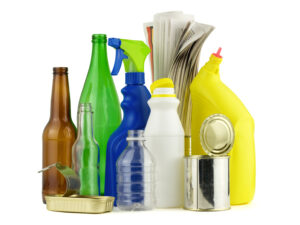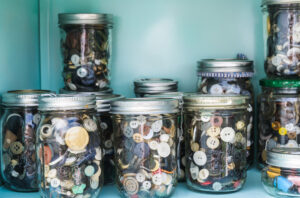To help find a solution to the China recycling crisis and to alleviate the amount of waste going to landfill a target was announced (in April) that by 2025, all Australian packaging needs to be recyclable, reusable or compostable. This programme will be led by the Australian Packaging Covenant Organisation (APCO) in conjunction with Governments and Industries.
But what does this actually mean? And what are the challenges?
In a recent SKY News interview with APCO’s CEO Brooke Donnelly, it was mentioned that the APCO are currently working closely with Government and industries to breakdown how the 2025 target will work. So, we should hear more about the specifics in the upcoming months.
Until then, here’s our take on the new target…
What does ‘recyclable’ packaging mean?
 By (Oxford Dictionary) definition recycling is to ‘Convert (waste) into reusable material’. This means that the used packaging is sent off to a recycling facility and processed into something else. Click here to read about recycling processes. In Australia, recyclable packaging examples are things like aluminium and steel cans, glass and plastic bottles/jars/containers and paper/cardboard. Generally, most food and beverage packaging falls into this category (although we are slowly starting to see more compostable packaging in this category too).
By (Oxford Dictionary) definition recycling is to ‘Convert (waste) into reusable material’. This means that the used packaging is sent off to a recycling facility and processed into something else. Click here to read about recycling processes. In Australia, recyclable packaging examples are things like aluminium and steel cans, glass and plastic bottles/jars/containers and paper/cardboard. Generally, most food and beverage packaging falls into this category (although we are slowly starting to see more compostable packaging in this category too).
If you look in your pantry most items will probably fall into the ‘recyclable’ packaging category. To name just a few items you might have: olive oil jar (glass), peanut butter (glass or plastic), cereal boxes (cardboard), bag inside cereal box (plastic – to be recycled through REDcycle), pasta and rice bags (plastic – to be recycled through REDcycle), spice jars (glass).
Recyclable packaging challenges
- Lack of knowledge on how to recycle. As the Australasian Recycling Label (ARL) becomes more widely spread this will hopefully remove recycling confusion and encourage people to recycle more.
- Households not maximising recycling options. For example, while households may recycle commingled items well (glass, plastic containers, cans and paper), they might not use the REDcycle programme for the scrunchable plastic so these items end up going to landfill.
- The waste import restrictions that China has imposed have highlighted that we have a real lack of infrastructure to support domestic recycling in Australia. Equally, we do not have the end markets here that reuse recycled products.
What does ‘compostable’ packaging mean?
 While in Australia there is no agreed definition of ‘compostable’, generally speaking most would say compostable packaging refers to packaging that can be processed through composting and breaks down within a 12 week period. You may have noticed over the years more and more compostable packaging for takeaway food containers, coffee cups and cutlery coming onto the market (for example BioPak and Vegware).
While in Australia there is no agreed definition of ‘compostable’, generally speaking most would say compostable packaging refers to packaging that can be processed through composting and breaks down within a 12 week period. You may have noticed over the years more and more compostable packaging for takeaway food containers, coffee cups and cutlery coming onto the market (for example BioPak and Vegware).
Compostable packaging challenges
Compostable packaging is technically a terrific idea but there are a number of challenges with it currently in Australia. What people may not know is that most compostable packaging needs to be taken to a specialised commercial composting facility. This in itself has two issues:
- Where does one find somewhere to dispose of the packaging? We don’t generally see ‘commercial compost’ bins on the side of the street.
- There is currently a lack of facilities that can process compostable packaging in Australia.
What this means is that while cafes may be serving the coffees in compostable cups there may not be the option available to compost them. Unfortunately, this results in the cups ending up in landfill! Like other organic material in landfill, the compostable packaging will give off methane while it degrades. The time the compostable packaging takes to breakdown would be dependent on the particular item/brand.
There is also the overall issue with the absence of measurable definition for ‘compostable’. This is something that APCO is currently working on.
What does ‘reusable’ packaging mean?
 As we arguably are still living in a ‘throwaway society’, single use packaging (recyclable or compostable) seems to be more commonplace in Australia than reusable packaging.
As we arguably are still living in a ‘throwaway society’, single use packaging (recyclable or compostable) seems to be more commonplace in Australia than reusable packaging.
Similarly with ‘compostable packaging’, ‘reusable packaging’ lacks definitive terminology but if we changed our mindsets we could definitely perceive more packaging as ‘reusable’! For example, boxes could be used multiple times, glass jars and bottles could be reused in a number of ways. (kitchen storage, craft etc).
Reusable packaging challenges
Challenges for reusable packaging include the definition (again something on the agenda with the APCO) and possibly the perceived lack of it on the market.
Overall verdict
It will be interesting to see how things develop in Australia with regards to the new packaging targets. While it’s great to see things moving forward, we think to make this successful there will need to see some big changes to recycling infrastructure and availability of resources in Australia.
